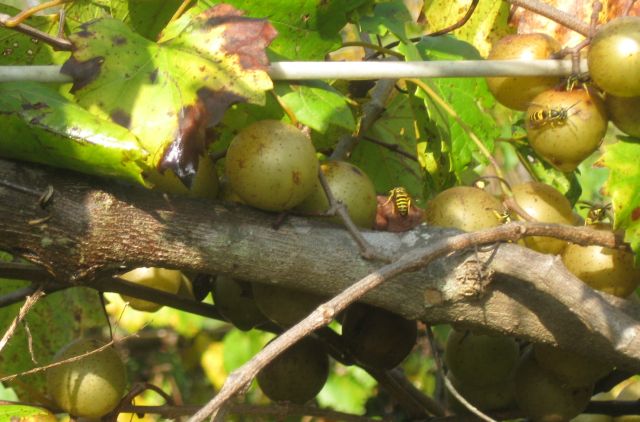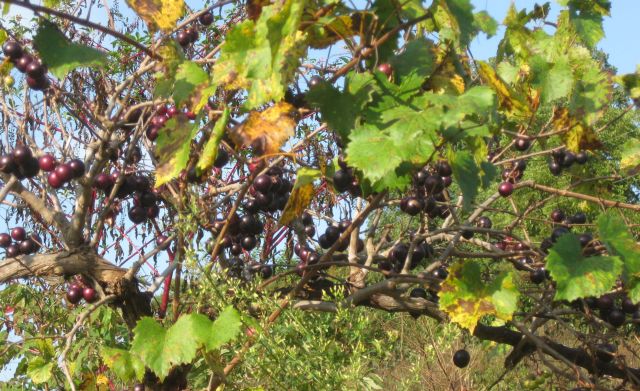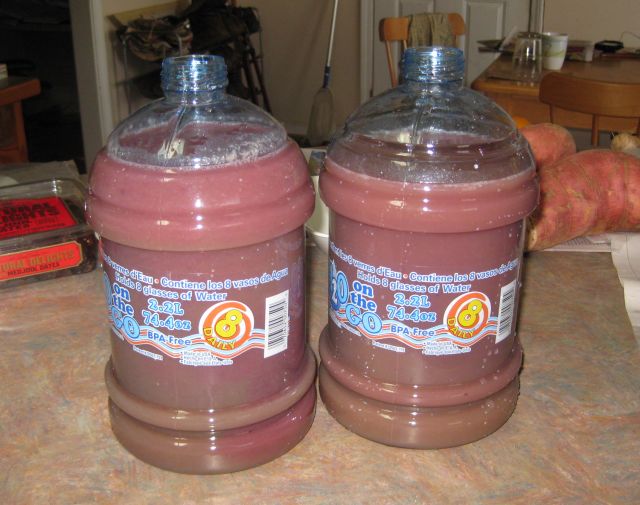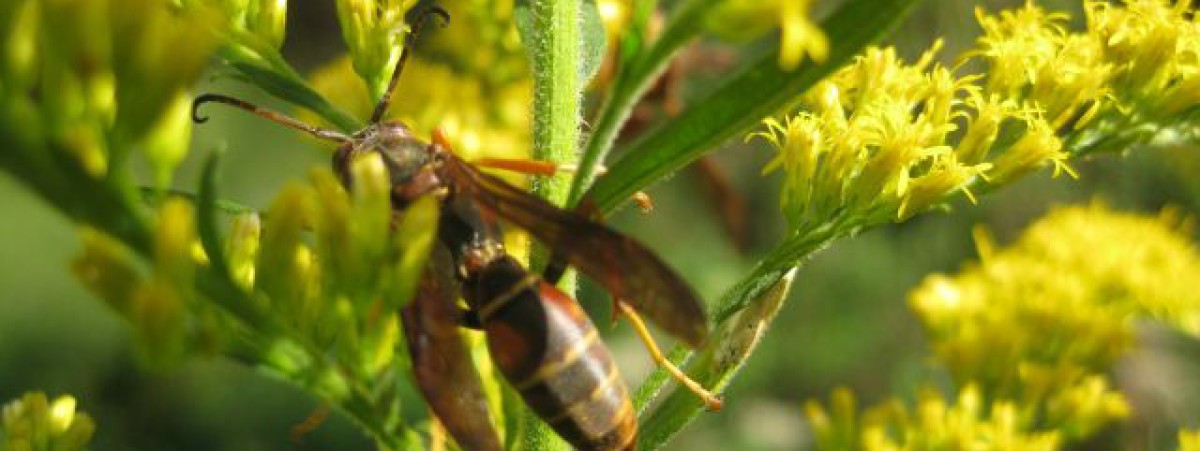With my bobcat I excavated a level terrace along the slope of the hill, then I dug a ditch down the middle of it, filled it with logs and ran a single cable about 5 ft high on either side of the ditch. The cables are threaded through posts planted every 35ft for a total length of about 110 ft. Then I relocated my muscadine vines from the vegetable growing area to the terrace where they have thrived. The problem with muscadine vines is their roots can extend up to 50 ft so they were mining nutrients from my raised vegetable beds and had to be re-sited. On the hillside I have left them to their own devices confident they will find the moisture and nutrients they need and they have – another example of the problem being the solution. So apart from occasional trimming of the vines I have not watered them at all through the summer (nor sprayed or fertilized, so they are organic in the true sense), and now their grapes are bursting with sweetness.
I am not the only visitor. I previously posted about stepping on a yellow jacket nest, actually a 3 inch diameter hole in the ground guarded by sentries who went after me. I read in the local paper a K9 patrol (dog handler and dog) were in pursuit of a suspect, stumbled on a yellow jacket nest and both were stung, the handler 50 times, and needed urgent care. I treat yellow jackets with respect. And now they are all over the vines.

The green grapes I call scuppernong, the black grapes simply muscadine, though there are numerous varieties of each.

Last year I picked the grapes individually doing the press test to confirm softness. This year I decided to change the technique after I press tested one grape and, because it was surprisingly soft, examined more closely and found I was pressing on a yellow jacket which was as much startled as I. Individual selection is best when there are ripe and unripe grapes in a bunch but now I simply select the ripe looking bunches, position my collection bucket below and snip the bunch which falls intact into the bucket. So I get them all instead of losing some to the ground. Also there is less vibration to the vine which keeps the other visitors happy. And it is much quicker. When my collection bucket is full I simply tip it into the 5 gal bucket. When the 5 gal bucket is about half full I call it a day and head to the faucet. I simply fill the 5 gal bucket with water until the grapes are covered and observe. This morning 2 yellow jackets, a large wasp, stink bugs and a spider all surfaced. Usually I squash the stink bugs between thumb and finger but since i had a good collection, unstung, I helped them all out of the water and to safety. I took grapes out of the bucket, separated them from their stems and vines, discarded a few unworthy specimens, and dropped them into the second 5 gal bucket. A fairly quick process.

The operation then moves indoors. Our preference is to eat grapes rather than juice them since with juicing the pulp goes to waste (actually to the compost heap but much better if it were digested). However we have too many grapes. Next year I will make muscadine wine. This year the dilemma was what to do with the grapes? I gave away some but still had a surplus. So I decided to juice them. The masticating juicers will extract more juice but my intention is limited juicing so I bought a cheaper centrifugal juicer, Bella, which I thought was made in Italy (Europe is suffering and I am happy to support its products) but actually is made in China and comes with English and Italian instructions. It has two speeds, a 1,000 watt motor and at slow speed quickly works its way through the grapes.

The residual pulp is pretty moist so I simply placed it in a pot and let gravity remove more juice and got an additional 2 full glasses which I promptly drank.
And the result. From this morning’s harvesting I ended with 2 2.2L containers.

The taste is intense, sweet and slightly acidic. I can only guess how much commercial grape juice has been diluted when I compare the thin, filtered, pasteurized commercial grape juice with this muscadine grape juice. The real question is how long will it store before it goes off. I have read 3 days mentioned. I hope it will be more since it will take some time, even with help, to enjoy drinking the juice.
